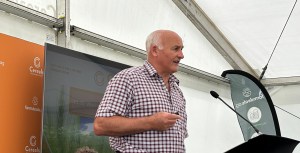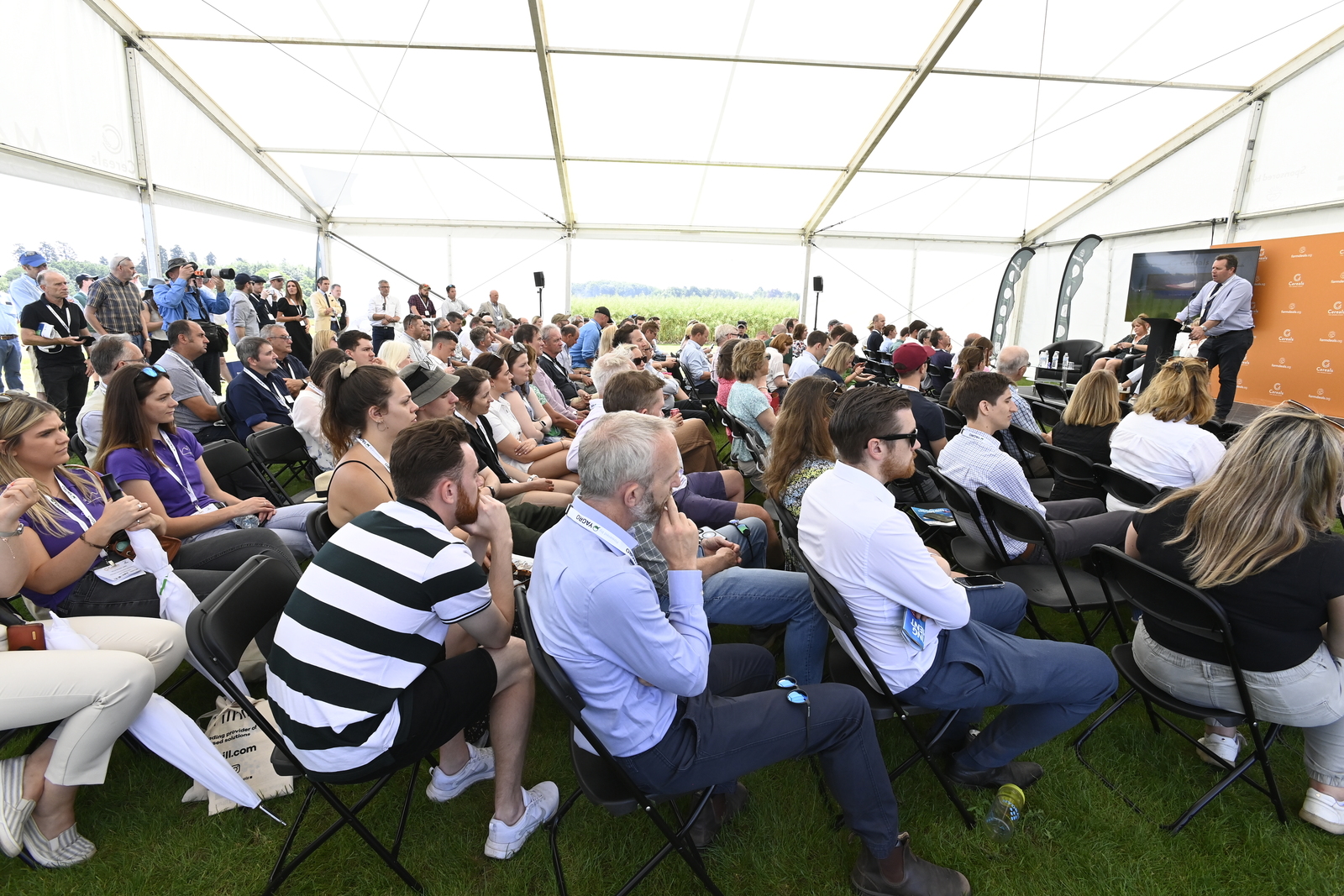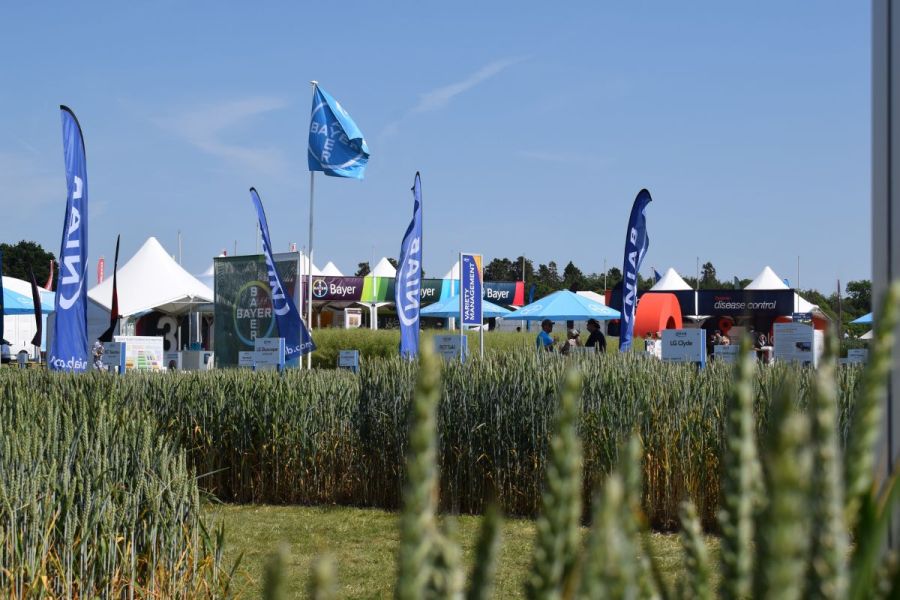Collaboration, connections and working together were all themes that permeated this year’s Cereals Event. CPM had boots on the ground to hear the latest from the industry.
“We’re having to increasingly demonstrate the emissions intensity of the products leaving farms.”
By Melanie Jenkins and Janine Adamson
A new location in the rolling grounds of the Thoresby estate in Nottinghamshire saw this year’s Cereals Event take on a different feeling: one of building bridges and making connections to strive for a better future for the industry.
A recurrent theme in a number of the seminars was climate change and greenhouse gas emissions (GHG) and how the industry will tackle these. With last month’s news from the Climate Change Committee that the UK is no longer a world leader on climate issues due, in large part, to government actions and inaction, internal collaborative efforts among those in the agricultural sector are likely even more vital.

Working collaboratively is something New Zealand farmer, Roger Dalrymple, has done to help protect the agricultural industry in his homeland.
But how does farm productivity link with measuring GHG, asked Hugh Martinaeu of Map of Ag. “We have a climate emergency but there are also drivers coming from the supply chain, government and from financial institutions. The UK has been a global leader in developing climate policy and was the first country to have legally binging targets, so there’s a national target set.
“But the supply chain has become increasingly interested in this area and it’s setting its own net zero targets. So we’re having to increasingly demonstrate the emissions intensity of the products leaving farms,” he explained.
However, there’s a less well-known component driving this, which is coming from financial institutions and the Taskforce on Nature-related Financial Disclosures. “It’s an important element of why we’re increasingly going to be asked for information about our GHG emissions on farm.”
What this effectively means is that financial institutions lending to agricultural businesses will have to allocate an emission to that loan, explained Hugh. “This is important because they’ll have to drive down their emissions from the finance that’s being loaned into farming.
“So there’s a baseline requirement to measure and monitor in the supply chain, but also from the lending facilities. I would argue that the finance component is going to be an even larger element than either the supply chain or government targets in driving us to understand what’s happening on farm over the next couple of years.”
Other than driving down emissions, there are obviously opportunities to remove CO₂ from the atmosphere. “Soils is a key one, and then there’s woody biomass, such as trees and hedgerows.
“So how can we improve our engagement with GHG emissions calculations? There are ways and means of doing this using key performance indicators for businesses,” he said.
In an effort to streamline this process on farm, Map of Ag has produced a calculator that requires simple data inputs to produce a figure on this. “So looking at inputs, we’ve got nitrogen and fuel use, plus plant protection, and then the yield output – we’re measuring the emissions generated from our system compared with how much output we’re generating.
“If we can create a system where you input your information in an easy way and it then generates an emissions intensity calculation based on these keys things, then we can better understand and communicate the opportunities for emissions reductions.”
One way to perhaps tackle on-farm emissions, alongside driving towards a successful business, could be through working together. According to Tom Allen-Stevens of the British On-Farm Innovation Network (BOFIN), there are two very good reasons for people in the industry to work more closely together. “Firstly, it makes very good business sense, and secondly, it makes farming far more interesting. And shared ideas are like gold dust,” he says.
Working collaboratively is something New Zealand farmer, Roger Dalrymple, has done to help protect the agricultural industry in his homeland. “The whole world is under environmental challenges, from global warming to cutting carbon emissions and protecting biodiversity.
“In New Zealand, there are challenges in reducing greenhouse gas emissions and meeting freshwater policy from government, plus pressures to protect the environment,” he explained.
And like the UK, New Zealand has issues with the disconnect between the public and farming. “We’ve got to fix this and get people back on board. We’re stronger together and we must work this way as an industry because it’s not enough as an individual farm. To do this we have to get tools in the toolbox that will allow others to tell our story, and this means having data about the environment on farm that proves we aren’t polluting it. “How can we push back if we don’t understand this.”

Delegates heard experts as they took to the Main Stage to discuss ‘great soils and great crops’.
To try and realign the attitudes towards farming from local communities, farmers in New Zealand have started community catchments and Roger is part of the Rangitīkei Rivers Catchment Collective. Consisting of 700,000ha, 23 sub catchment groups, and 350 farmers – who are signed up and paying a voluntary fee – the group is working to gather information about the local community and the environment, explained Roger. “It’s all about having strong vibrant communities and it’s something farmers world-wide must do to educate the masses.
“We’re looking to support and educate farmers in the group too, as well as making improvements to get ahead of what society wants. The community catchments are about us taking responsibility for how we look after our soils and our waterways.
“We want to be able to support our communities, it’s not just a one, two or three-year vision, it’s a 15 to 30-year vision of what we want to have happening in our local community. If we can do this well, then it’s a great story and it’s making farming sustainable for ourselves and our grandchildren.”
Closer to home, the Landscape Enterprise Networks (LENs) are bringing farmers together with private and public finance to create nature-based solutions that both benefit the farmer and the local or wider community, as well as the paying business.
LENs started in Cumbria but has now been rolled out across the UK and into the EU, explained Alison Rickett of 3Keel. “So how does it complement the farm business as a possible income? It’s a system that links buyers and sellers of nature-based solutions. Buyers can include multi-national companies, national or local ones, right down to local government.”
These companies are often looking to purchase services from farmers that will help with things such as sustainability projects, she said. “LENs establishes a list of what buyers are looking to achieve and this is taken to farmers – the supply side – to see if they can help deliver it.”
A project could include anything from cover crops to flood management and if a farmer can supply this then they’ll enter market negotiations with the company looking to buy, explained Alison. “A price is established based on what it’ll cost for these nature-based solutions to be carried out and formal contracts are written up. One thing that is quite different with LENs is that actions are 100% paid for, it’s not that you’ll have to put money in. Some measures may only last a year, but other things like tree planting or wetlands could last for many years.
“This has been demand led, but we’re getting more farmers come to us. And although farmers have a lot to offer, it doesn’t necessarily mean we’ll have a buyer. It’s multifunctional and we’ve found lots of ways to deliver projects,” added Alison.
“And these solutions are then delivered in a collaborative manner,” she said. “At the end of a project, the aim is for the land, soils and farmers benefits. The relationship building for LENs to work is huge and without it we wouldn’t be able to deliver projects. As it grows, the aim of LENs is to build farm business resilience and help farmers achieve far more than they would have done otherwise.
A further way to work together to achieve business success is through joint ventures, according to Ceres Rural’s Will Gemmill. “I’ve been setting up joint ventures since 2005, when wheat was £60/t, and there was a desperate requirement to get fixed costs out of the business. The first joint venture I did was between the home farm and my cousin. A year later, we took another partner on and went up to four partners in that business.”
So how does a joint venture work? “In its simplest form, two farmers get together and set up a joint business, which is usually contracting and often set up as a limited company or a limited liability partnership (LLP).
“And once you’re set up, you contract back to the parent businesses at cost, so hopefully you’re getting the work cheaper and you’ve got a contracting business that can then work for third party farms if you want to – hopefully at a profit,” explained Will.
But why go into a joint venture? “One of the main reasons is the reduction in fixed costs, which is typically £100-£150/ha – roughly 15-25% of your labour and machinery costs. So there’s a financial reason and it also immediately creates economies of scale.”
It can also release management time and means the original business structure can remain the same. “So you’ll retain 100% of the profit, but also 100% of the risk, and created a more professional approach as you have to plan more carefully.”
A joint venture could also allow farms to invest into newer technology and helps farmers cultivate a more positive frame of mind, he added. “It puts you back on the front foot.”
But joint ventures aren’t without downsides, warned Will. “One of the issues to be aware of is the chemistry of the farmers coming together – they have to be like-minded and often with similar sized businesses. It also requires a more planned approach, with regular formal meetings. Budgets have to be put together and costs have to be determined, as well as how to approach the rotation and harvest – so a written agreement is essential.”
Another aspect to be aware of is the tax implications. “If you transfer equipment from the old trading business into the new limited company or LLP, you create what’s called a profit on sale, so you have to be careful you haven’t generated an artificial profit in one year, something which can be avoided by phasing the sale over a few year. And the other thing to be aware of is the annual investment allowance.
“These decisions have to be made from the outset and you must lay out what you want to achieve from it. A joint venture can make big savings for the parent businesses and nearly all of the ones I’ve set up have grown in size and developed to be profitable contracting businesses.”
This article was taken from the latest issue of CPM. Read the article in full here.
For more articles like this, subscribe here.
Sign up for Crop Production Magazine’s FREE e-newsletter here.




